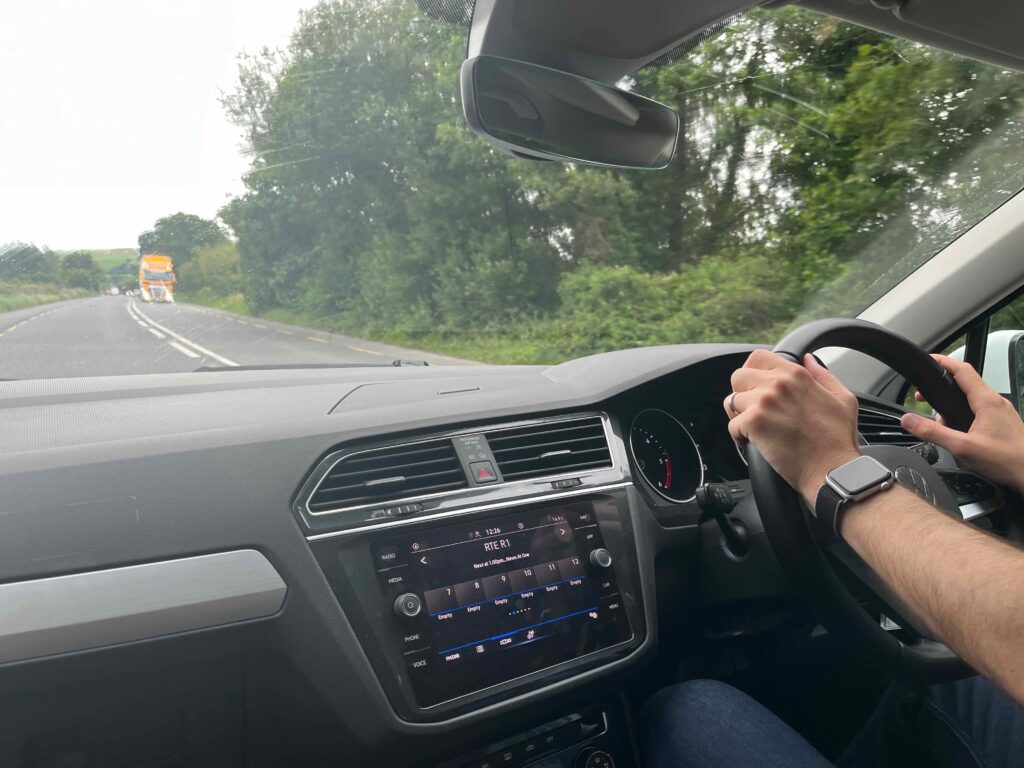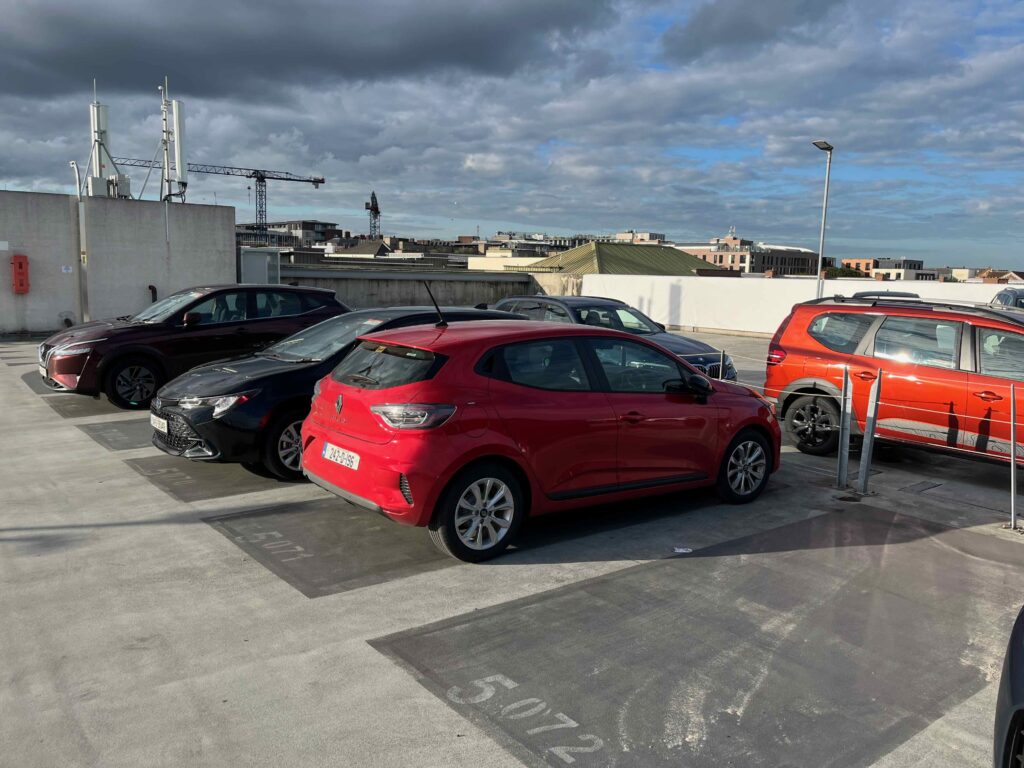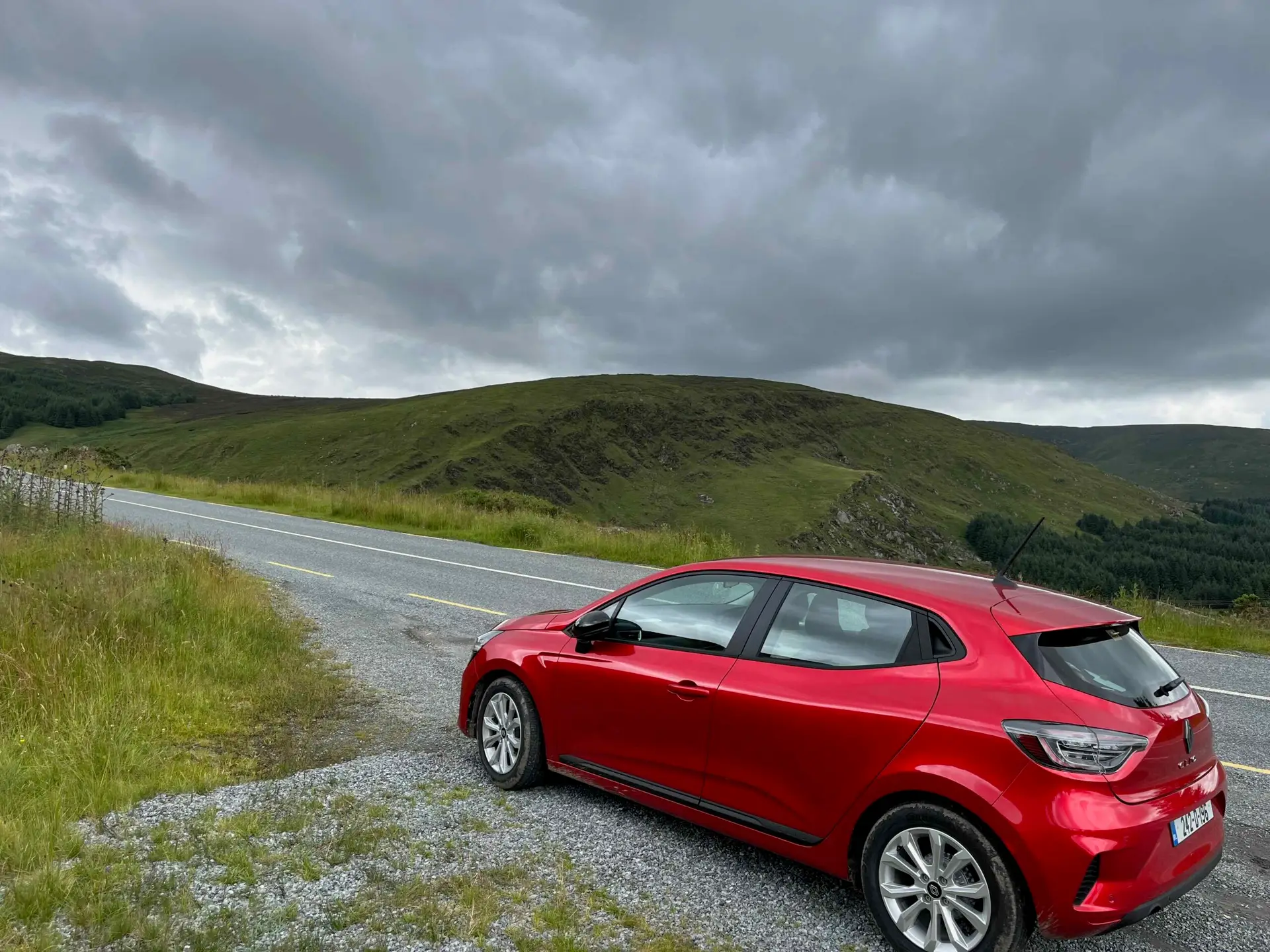Tips for Driving In Ireland
Driving in Ireland:
In Ireland, you drive on the left side of the road and the steering wheel is on the right side of the car. It can take some getting used to but, like anything, it gets easier over time.
Renting a standard transmission is still common and is normally cheaper, but it can add a layer of complexity because you have to shift gears with your left hand instead of your right. For this reason, I recommend getting a car with automatic transmission. It’s one less thing you have to worry about when driving in a new country. Constantly shifting gears in a city with steep inclines can also add stress to the overall driving experience.
I recommend spending as little time as possible driving in Dublin. It is challenging to get around and often takes a long time to go a very short distance. For this reason, I don’t recommend renting the car at the airport when you arrive for a few different reasons:
- You will be tired when you arrive
- You are not acclimated to cars being on the left side of the road
- You will be tired and jet-lagged when you arrive
- You will have to find and pay for expensive parking in the city
- It costs you additional money, per day, for a car that you will not use.
- You can walk, take a taxi, or use public transportation instead of driving
The only time I would recommend renting a car at the Dublin airport is if you plan on not going to Dublin immediately. For the rest of Ireland, a rental car is my recommended form of transportation.
The morning you plan to leave Dublin, I recommend picking up the rental car. You can then drive and meet your group at the hotel to put your luggage in the car and then leave Dublin for your next destination. Something that can make your trip easier is to see if the vehicle comes with navigation or Apple CarPlay. Apple CarPlay works with iPhones and Google or Apple Maps. You can read more about cell service in Ireland on this blog post.
Another idea is to have someone from your group be the co-pilot. This is someone who sits in the passenger seat and helps with navigation.
The Roads:
Driving in Ireland is a unique experience that blends stunning landscapes with challenging road conditions, especially in rural areas. The country’s road network consists of modern motorways connecting major cities, but as you venture off into the countryside, driving changes considerably. Rural Irish roads are often narrow, winding, and lined with stone walls or dense hedges. While these roads take you through picturesque villages and breathtaking scenery, they also demand focus.
One of the most distinctive aspects of driving in Ireland, particularly in the countryside, is the charm of the narrow, winding roads that weave through beautiful landscapes. While the roads can be tight in some spots, with hedgerows or stone walls lining the sides, they add to the authentic experience of exploring Ireland’s more scenic and off-the-beaten-path locations. Many of these country roads are quiet and peaceful, with little traffic, allowing you to take your time and enjoy the surrounding views. Local drivers are used to the conditions, but by driving at a comfortable pace, you can confidently navigate the routes.
The country roads are also full of surprises. Whether it’s livestock wandering onto the road, a tractor taking up most of the lane, or a sharp corner hidden by overgrown hedgerows, unpredictability is always present. Weather conditions, such as rain and mist, can make the roads even more slippery and visibility challenging, particularly in the west and along coastal routes. Despite these difficulties, driving in Ireland offers a chance to see hidden gems that public transportation can’t reach, from ancient ruins to quiet coastal inlets. My recommendation is to drive slower than the speed limit on these narrow roads. Also, when you spot a large oncoming vehicle such as a delivery vehicle, pull over to your side of the road to allow them to pass.

Tolls:
In Ireland, tolls are generally found on major motorways, especially those around Dublin and some other key routes. The process for paying tolls is straightforward, but it’s helpful to know how they apply to rental cars specifically.
Most toll roads in Ireland operate with manual payment booths where you can pay the toll in cash or by card as you pass through. You’ll find these booths at fixed points along the motorway, and the fees vary depending on the road and the type of vehicle. Signs before each toll booth will clearly indicate the charges.
One exception is the M50 motorway around Dublin, which uses an electronic toll system called eFlow. There are no toll booths on the M50, and instead, your vehicle’s license plate is recorded as you pass under tolling points.
For rental cars, tolls are handled in a couple of different ways depending on the rental company:
- For toll booths on motorways (excluding the M50), you’ll pay directly at the booth, just like any other driver. Keep some coins or a card handy for these payments. I was able to pay with Apple Pay for many of the manual payment booths.
- For the M50 eFlow toll, most rental car companies automatically charge this to your account. They usually monitor your vehicle’s license plate and will either charge the toll to your credit card or include it in your final rental bill. Some rental companies may add a small administration fee for processing these tolls. It’s important to check with your rental provider when you pick up the car to understand their exact policy.
By being aware of the toll system and understanding how your rental company handles payments, you can travel smoothly without any surprises. Make sure to confirm the M50 toll handling with your rental agency, as failure to pay it on time can result in fines or additional charges.

Car Rentals:
I have used Sixt several times in Ireland and in many countries in Europe. I have always had a great experience. The cars are new and well taken care of and the staff has always been friendly and helpful. I recommend the Sixt branch in the Dublin City Centre. If you fly into the Shannon Airport on West Coast, I recommend the Sixt Branch in the Shannon Airport.



